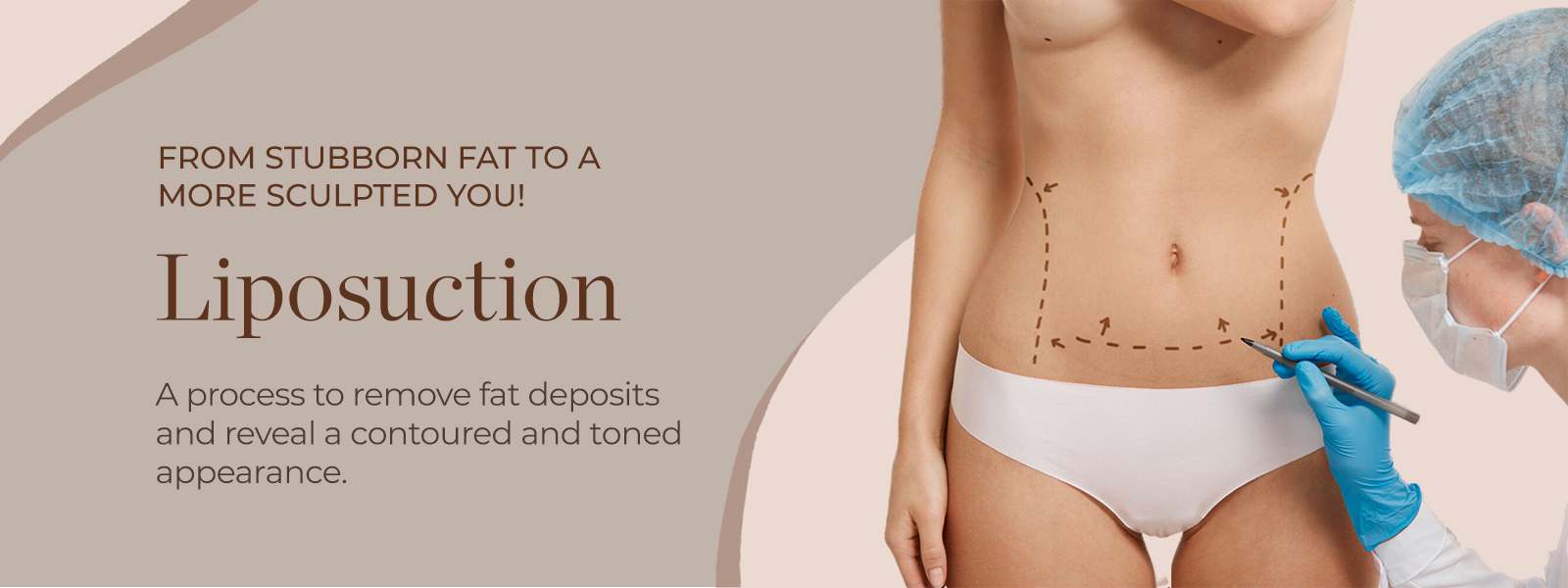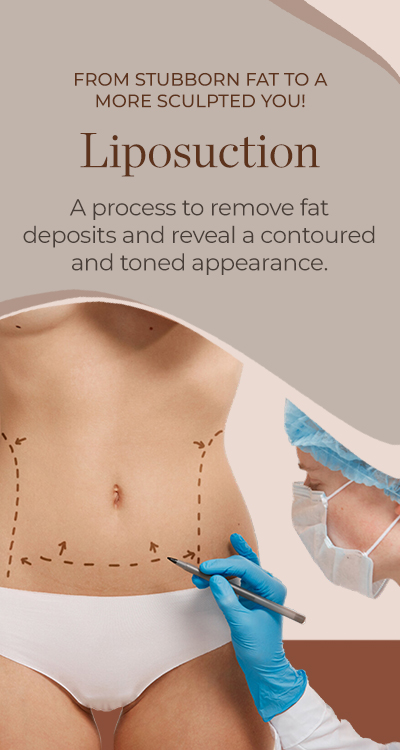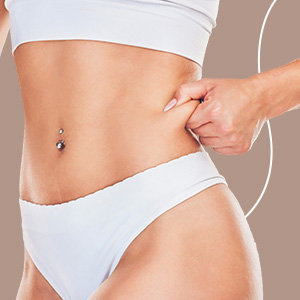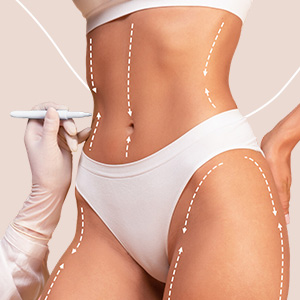

At A Glance
| End Result: | After a few months |
|---|---|
| Socially fit: | After 2-3 days |
| Fit for desk work: | After 5-7 days |
| Surgery: | Local anaesthesia or general anaesthesia |
| Risk: | Low |
| Pain: | Low |
| Active exercise: | After 3-4 weeks |
| Inconveniences: | You may feel pain similar to muscle soreness for a couple of days, a compression garment has to be used for 2-6 weeks |
What is Liposuction?
Liposuction is a cosmetic surgical procedure designed to remove stubborn pockets of fat from various areas of the body. Common treatment areas include the abdomen, hips, thighs, buttocks, arms, and chin. During liposuction, a thin tube called a cannula is inserted through small incisions in the skin, and excess fat is suctioned out using a vacuum-like device. The procedure aims to sculpt and contour the body by targeting localized fat deposits that are resistant to diet and exercise. Liposuction is not a weight loss solution but rather a body contouring procedure intended to improve body proportions and enhance aesthetic appearance. It is often performed on an outpatient basis under local or general anaesthesia, and recovery time varies depending on the extent of liposuction and the individual’s healing process.



Why Liposuction?
Liposuction is suitable for individuals who are at or near their ideal body weight but have specific areas of localized fat that are resistant to diet and exercise. Ideal candidates for liposuction are generally in good overall health, have realistic expectations about the outcomes of the procedure, and are committed to maintaining a healthy lifestyle after surgery. Liposuction is not recommended for individuals who are significantly overweight or have underlying medical conditions that may increase the risks of surgery. Additionally, candidates should have good skin elasticity to ensure optimal contouring results after fat removal.
